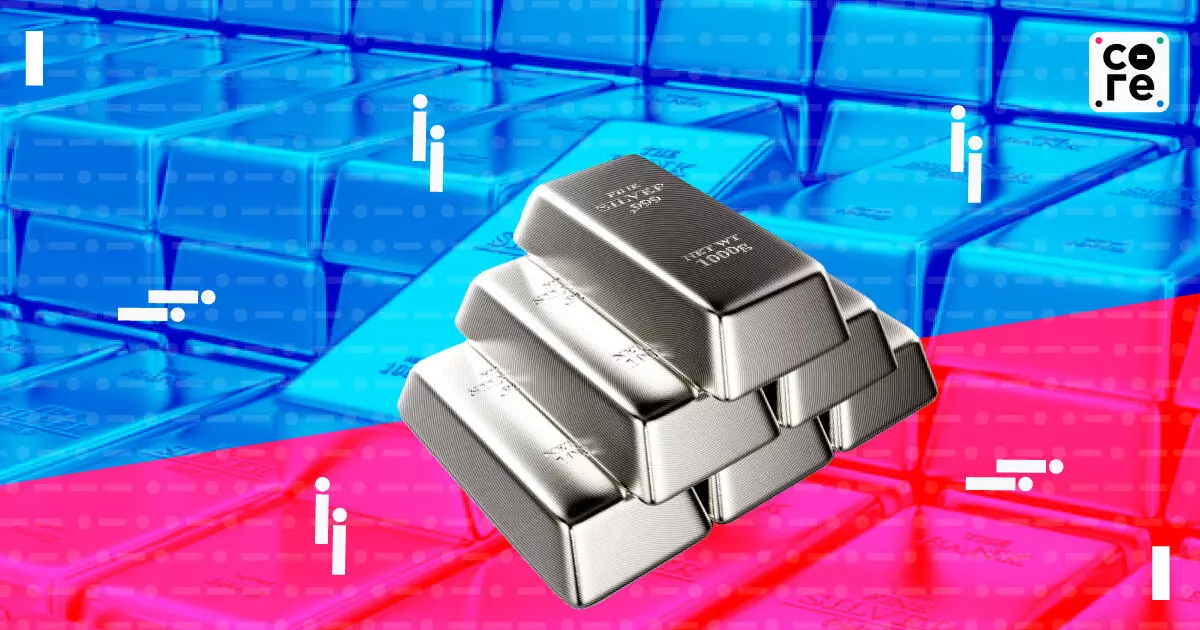Copyright thecore

Silver prices have been on a wild ride. In October alone, the metal saw 11% gains before a fall of 17% leaving traders surprised and producers scrambling to make more. To say the shiny metal has been volatile is an understatement. Surging demand from investors for ETFs, Diwali rush to buy the actual metal and shortage of supply led to the volatility. As the world’s largest consumer of silverware and jewellery, and a growing hub for industrial use, India was a driver of the metal’s turbulence. This up and down of prices has triggered more lasting changes. Even as the dust hopefully settles, participants across the value chain — from miners to recyclers and investors — are going back to the drawing board to rework strategies. October’s Shimmering Peak After a decade of relative calm, silver prices skyrocketed 70% in the last 12 months, to touch a new all-time high of $54 per ounce on October 16 before falling to $46.59 per ounce by October 27. They have settled since above $48 per ounce. “Besides the AI, transportation, energy driven demand, what has supported silver this time is the geopolitical uncertainty likely rarely seen before,” said analysts at Phillip Capital in a September 30 note when the metal was already up 68% for the year. India packed a further punch to this global rally in silver prices. Demand for physical silver and silver exchange traded funds (ETFs) led to the temporary shutting down of subscription and even spooked the free-float availability of silver in the London markets. India’s Outsized Appetite Global silver demand stood at 1.16 billion ounces in 2024, according to The Silver Institute, outpacing mine production of 819.7 million, a clear deficit. India ranks only 11th among the 20 mine producing countries, with 22.5 million ounces of production, but its consumption is way more than its output. India imports more than 80% of its silver that it used as investment, making jewellery, used by industries and electronics. In 2024, India’s industrial demand for silver was 42.9 million ounces, for electrical & electronics demand was 19.1 million ounces and 87.9 million ounces for jewellery fabrication, the largest share, according to data from The Silver Institute. India’s scale of demand makes it a key factor in global prices and a bellwether for supply stress. A Moment For Miners As silver prices settle from their mid-October peak, stakeholders are planning their bets. Business expansion, hedging, doubling down on production targets, and finding alternates are all under consideration. Take Anil Agarwal promoted Vedanta Group’s Hindustan Zinc (HZL), the only big silver producer in India, for example. In FY25, the company produced 687 tonnes of silver (roughly 22 million ounces). The recent silver rally has prompted the company to double down on production from the current 700 tonnes to 1,500 tonnes, company executives informed analysts this month. HZL has diverted resources from other mines to Sindesar Khurd Mine in Rajasthan, known for its high silver content, incentivised the contractors and workers, “so that we get the maximum advantage of silver till the time the prices are high”. Event lenders are taking note. UCO Bank, in a recent call with analysts, indicated that it will explore opportunities with clients in commodity-linked manufacturing (including precious metals such as silver), but avoid those involved in speculative trades. Industries Take A Hit Meanwhile, manufacturers are feeling the squeeze. Electronics and semiconductor manufacturers are likely to see a rise in costs as most of the silver used in manufacturing is for components that are imported. Executives from these electronic companies have indicated a possible pass-on, as the increased cost trickles through the supply chain. The green economy, one of the biggest drivers of silver in India, is also feeling the pressure. Think photovoltaic (PV) modules, electric vehicles and electricity grid infrastructure, the metal is critical for their production. Companies in this segment are racing to find alternatives. Vikram Solar, a solar module manufacturer, are hoping Tunnel Oxide Passivated Contact or TOPCon technology could help. TOPCon reduces silver usage through the use of aluminium paste and other alternatives instead. TOPCon is pegged to cut down on silver usage by as much as 40%. A Silver Lining For Recyclers The rise in silver prices is both a blessing and a burden for recyclers. Silver is found in e-waste like other metals such as copper, gold, silver and aluminium. India produces more than 1.75 million tonnes of electronic waste annually, each tonne containing around 0.2% silver. However only 5% is recycled. E-waste procurement costs have increased 10 to 20% in the last month alone, noted Nitin Gupta, CEO and co-founder of waste management service Attero Recycling. “This is not a usual trend,” he said. Globally, about 193.2 million ounces of silver is recycled...



